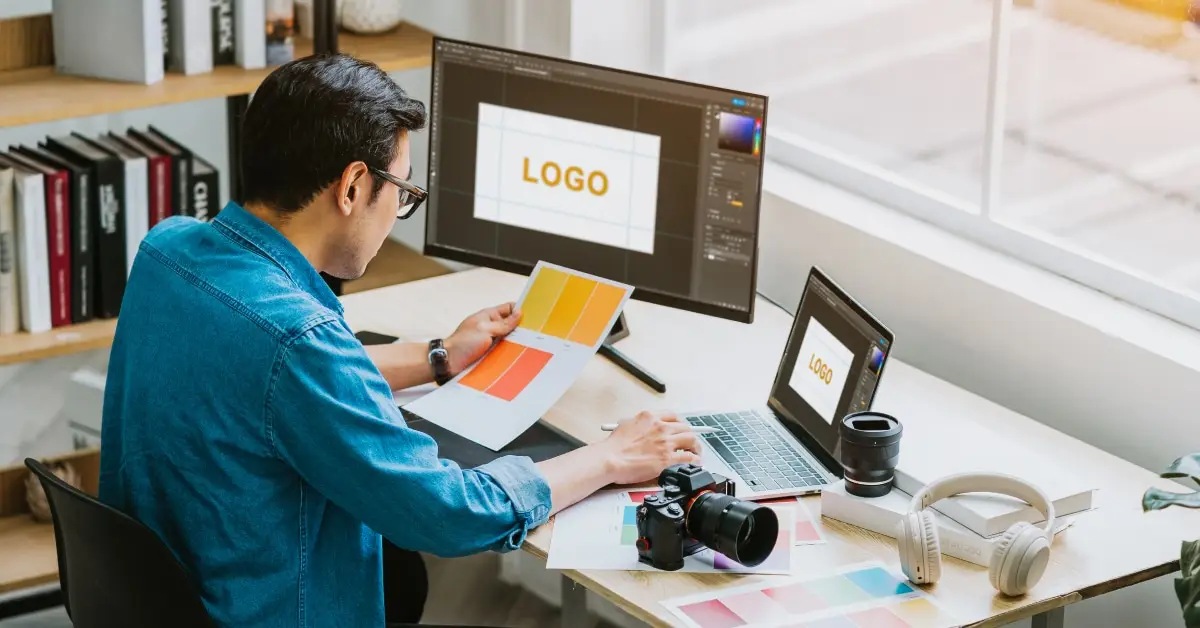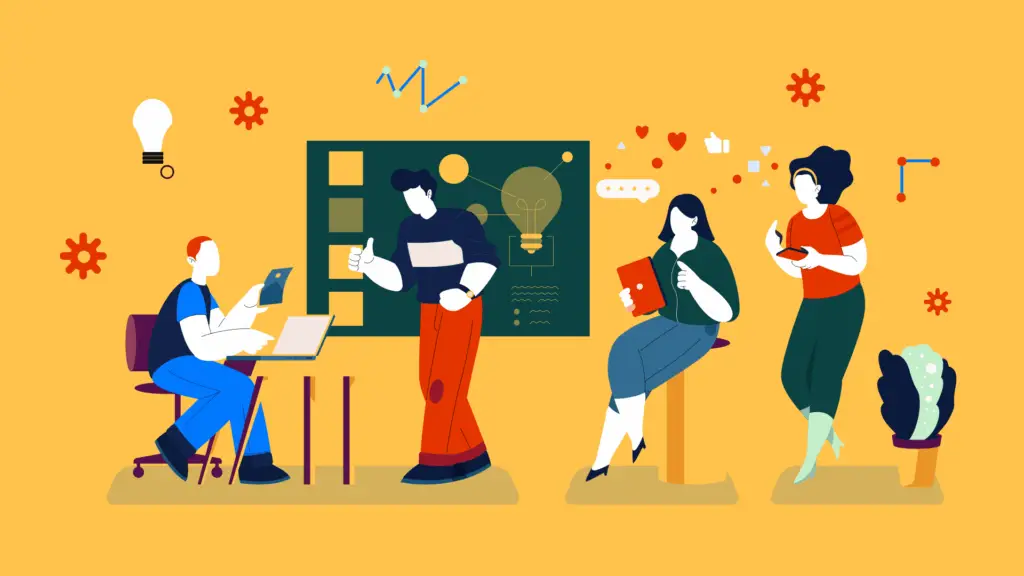Yes, design workflow matters. Here’s why
Design is more than just the finished product – it’s also about the journey you take to get there.
The way you or your team approach the design process can make all the difference in terms of efficiency, effectiveness, and overall success, which is why having a streamlined design workflow is so important.
But if you haven’t got one, where do you start? What does an effective design workflow look like?
In this article, we’ll explore the key stages of the design process, common design challenges designers face, and tips for optimizing your own design workflow to maximize your efficiency and productivity.
What is a design workflow?
Sometimes known as a design system, a design workflow is simply a plan or order of working that you can follow during the design stage.
Whether you’re working on a website homepage design, a set of social media assets or an in-depth animation for a new client, having a workflow in place comes with many benefits.
- Manage expectations: for your clients or teammates. A systemized flow means everyone knows the design project’s stage at any given time.
- Increase efficiency: you’ll know what’s next without hesitation, so you can focus on letting your creativity shine.
- Systemizing: helps eliminate unnecessary steps or potential bottlenecks.
Key stages of the design process
The design process itself can be broken down into 5 key stages, each with its own unique objectives and challenges.
These stages are:
Brief → research → explore → review → present
Start with a creative brief
A creative brief is not just the first but arguably the most important step, as it sets the tone for the entire project. It’s a central point of truth – usually a document or SOW (scope of work) – that each designer can use to understand the direction, the goal, and the requirements expected of them.
A creative brief needs to be as clear and detailed as possible to avoid any confusion or stressful back and forth, and should include:
- Company information (if working with a client)
- Dates and deadlines
- Project background
- Project goal
- Target audience
- Deliverables (and formats they’re needed in)
- Budget
- References
If you’re working with an established brand, you’ll need a link or reference to their brand guide, too.
Conduct graphic design research
Now that the brief is clear and the direction is set, it’s time to get to work. Starting with research.
Research can often feel tedious to designers that want to start creating, but it’s a crucial step in developing creative flow. The more research you can do on the client, the brand or the target audience, the better chance you have of delivering something that knocks the brief out of the park.
Consider researching:
- Competitors – what are other brands doing in this space? What’s the landscape like?
- Trends – for inspiration
- Past campaigns the client/brand has done
- The target audience – what do they engage with?
Explore design ideas
Once research is sufficient and you have a solid understanding of what’s needed, the fun can begin. It’s time to get creative.
This is the time to test, explore and experiment with different ideas and directions – even if you have a strong idea of which direction you want to take the design, don’t skip this step. You may find that something else comes out of it that’s even better than the initial plan.
Ways to explore ideas:
- Create moodboards
- Doodle in a sketchbook
- Create mockups
If you’re working with a design team, this is a great stage to encourage ideas to be split across the team so that inspiration is both sparked and shared.
At this stage, revise the concepts to 3-4 ideas and share them with the client or project owner to determine the final direction you’ll take. Listen to feedback, explain ideas and be open-minded to tweaks and changes – it’s all part of the process.
Review the work
Go, go go!
The direction is set and the designing is now fully underway.
It’s at this stage that you’ll develop the chosen idea into a final design, so ensure that you’re referring to the creative brief throughout the process.
Review and refine the designs until you’re happy with the outcome and the brief is fulfilled, before sharing with the client or project owner. You may want to do this process at multiple stages of the final design, depending on what’s been agreed.
If there’s time allocated, this can be a great time to walk away from the project for a day so that you can come back to it with fresh eyes and a fresh perspective.
Present the final design
Hurrah! You’ve made it through the process, you’ve checked that brief has been met and you’ve got a final design that you’re happy with.
It’s time to show the client or project owner the fruits of your labor. Don’t be afraid to ask for feedback on how the process went – it’s this feedback that will allow you to refine your design process to make sure it’s as streamlined, client-, and designer-friendly as possible.
Common design workflow challenges
Design workflow can be a complex process depending on the scope of the project, and there are several common challenges that designers could face along the way.
Communication and collaboration breakdown, unclear objectives, a lack of defined processes and tools, or the dreaded scope creep can all slow down the workflow and make it difficult to move forward.
To overcome these challenges, it’s important to:
- Establish clear communication channels
- Use collaborative tools (we love project management tools like ClickUp for this)
- Set clear objectives and realistic deadlines from the outset
- Involve each designer assigned to the project from the beginning
- Ensure the SOW is clear and defined (with steps to deal with add-ons)
Tips for streamlining design workflow
Want to make your design workflow even better? There are several strategies that you can use to streamline the design process and improve efficiency.
Design templates
Design templates and pre-made assets speed up the design process. They can help to ensure consistency and save time on repetitive tasks. It takes a little work upfront to build your templates but once created, they’re an on-brand shortcut to high-quality design.
Design systems
The next level of templates is building a full design system, including icons, fonts, graphic elements and more. Again, these take time to build, but they can become an invaluable resource if you’re designing for the same client or brand time and time again, by saving time and resources in the long run.
Communicate clearly
If you’re a marketer or a creative leader, this one’s for you. The best way to ensure a smooth design process is to communicate your expectations clearly from the beginning. Use the stages above to share your vision with the design team and be direct in your feedback to avoid painful back and forth.
The benefits of an efficient design workflow
We hope now you can see that by optimizing your workflow, you can improve the efficiency, productivity, and overall success of any design project.
By following the key stages of the design process, being aware of common challenges, and implementing tips for streamlining the workflow, you can expect:
- Improved collaboration
- Faster turnaround times
- Increased productivity
- Stronger creative ideas
Whether you’re a graphic designer, work on an agency design team, or simply want to improve your personal design workflow, these tips and strategies can help you become more efficient and effective in your work.
Need an extra pair of design hands for your next project? Book a call with the Design Force team today. Within just 15 minutes, we’ll guide you through our proven workflow that can enhance your own.



